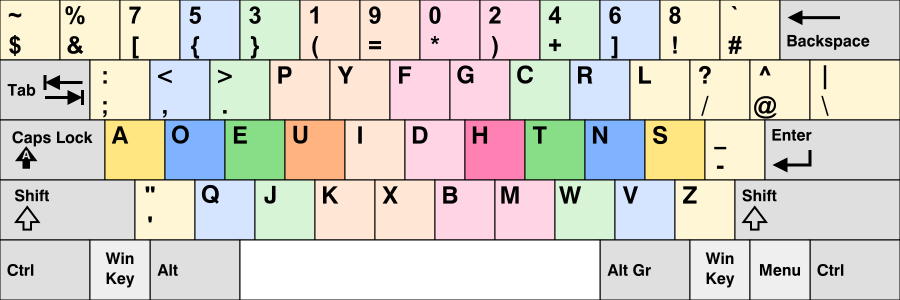This site has moved to snehit.dev
I’ve been trying to learn touch typing for long. Like most people, I practiced on qwerty, but could never actually touch type with confidence.
First time I touch typed, I was in third grade. As a part of the computer club, I had to type out a children’s book into MS Word and then copy paste the text into Windows Movie Maker to make a short video with the text and pictures. That ended up being my last touch with touch typing for ten years.
Start Fresh
In 2020, I decided to learn touch typing, no matter what! Easy thing to say, but after typing for ten years by looking at the keyboard, I couldn’t get rid of that habit. Looking back, I felt this was an investment I was too lazy to do. During my school days, I learnt basic C++, did some competitive coding, did lot of HTML and CSS, typed many many documents and even got Microsoft Office Specialist Certification - all via hunting and pecking on the keyboard.
Old habits are tough to change. I practiced on qwerty, and reached a tiny 40wpm.
Switching to new layout
A random user on a discord server suggested me to try out an alternative layout so that looking at the keyboard becomes futile. The idea resonated with me. Up until then, I never considered using an alternate layout.
I looked up on the net, and found that Dvorak kinda fit my needs. Claimed to be comfortable. Common alphabets placed on the home row. And right hand has more movement than the left, which is good for right handed people like me.
I started practicing on this website called learn.dvorak.nl. The website does not require you to change your layout from system settings. Instead, the website remaps keys based on input from your qwerty input. Of course, you can disable that feature if you have changed to Dvorak from system settings.
Enter Programmer Edition

About two weeks later, I was comfortable typing on Dvorak keyboard. As they claimed, it was easy to learn. I wasn’t a fast typer by any measure, but at least the keys were memorized and I could type without looking at the keyboard - even if it was at 15wpm. I decided I was ready to switch to Dvorak full time.
I went to the Arch Wiki to know how to change my layout. There I found another Dvorak based layout - Programmer Dvorak. The idea behind this layout was to place the common symbols used in programming on the top number row, and have them inserted without pressing Shift. The numbers need to be inserted with Shift key combination. Alphabets were in their right locations as they are on Simplified Dvorak.
This layout, for obvious reasons, immediately appealed to me. I started using it right away.
Experience
I get the typing benefits of Dvorak, which are great by the way. I feel less hand movement as compared to my Qwerty touch typing sessions. Layout makes sense, although I am not a fan of positioning the letter l where it is.
The layout is comfortable too. My wrists don’t curse me anymore when I am typing for long hours.
Having symbols on the top row makes them easily accessible. I am surprised by the fact that I am now happily typing out symbols while coding without requiring to press Shift.
Bottom line
Simplified Dvorak is good for all practical purposes. Programmer Dvorak comes with a small problem that the numbers on top row are not in increasing order. Typing numbers has been a severe pain for me, and those who watched me live stream my code often asked me why I was typing wrong whenever I had to type a number.
I faced another crisis when I gave my programming test at university. They had Windows computer, and I wasn’t allowed to use my laptop to give the test. Dvorak is a universal layout which you will find on all modern operating systems. However, Programmer Dvorak is not universal, meaning I did not have that for my exam. Alphabets were easy to type, but typing symbols - which you do after almost every word - was a serious pain. I suffered the torture for the first task and switched to Qwerty for my second task. Hunt and peck is more efficient than pressing random keys and hoping they are correct.
Conclusion
If you are happy with your current layout, continue with it by all means. However, even if there’s a tiny bit of curiosity in you to try out alternate layouts, then make sure you experiment.
If you want to be able to type on any computer - in case you type on other’s systems often - then Simplified Dvorak is the best option. If you want Dvorak but are mostly typing on your own system (like me) do consider Programmer Dvorak.
If you don’t mind using a non-universal layout, then there is Colemak layout, which looks quite impressive. Its easy to transition from Qwerty to Colemak. And reading up on their website, it certainly is worth trying.
For me, I am happy with Programmer Dvorak and am going to continue with it.
You can receive latest updates from this blog as an RSS feed. See Follow this blog via RSS.
Follow me on GitHub : flyingcakes85
Cover photo by John Petalcurin from Pexels